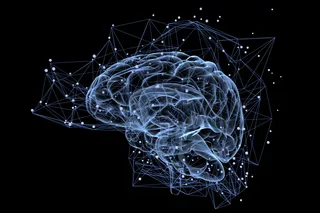High-frequency sound waves, known as ultrasound, have long been used as a non-invasive, safe method to visualize internal structures in the body. But recently, researchers have been pushing the boundaries of what ultrasound can do, including using it to treat medical conditions. Today, ultrasound is being used to destroy tumors, stop heavy bleeding, support drug delivery, and even influence brain activity in conditions like Parkinson’s disease.
Now, a research team from Dell Medical School at The University of Texas has explored whether this same technology could be used to treat mood, anxiety, and trauma-related disorders (MATRD). The results, published in Molecular Psychiatry, are promising: Participants with depression and other mood disorders who received targeted ultrasound to specific brain regions reported significant relief from their symptoms.
Treatment Options for Depression and Mood Disorders
Major depressive disorder, bipolar disorder, anxiety disorders, and PTSD continue to affect millions. Traditional treatments — like medication and psychotherapy — can be helpful, but they don’t work for everyone. Many patients experience side effects, incomplete relief, or simply don’t respond at all.
That’s why expanding treatment options is so important. One key area of interest is the amygdala — a brain region that becomes notably hyperactive in mood and anxiety disorders. While antidepressants, benzodiazepines, and psychotherapy may influence amygdala activity, researchers wondered: could ultrasound offer a more direct and targeted approach?
Read More: Can Strong Magnetic Pulses Cure Depression?
New Way to Change Brain Activity
Using MRI guidance, researchers applied low-intensity, high-frequency ultrasound with pinpoint accuracy (within millimeters) to the left amygdala. This area plays a major role in emotionally charged thinking and memory. In the first part of the study, researchers found that ultrasound could successfully reduce activity in this region by altering blood-oxygen levels — a key marker of brain activity.
In the next phase, participants received daily ultrasound sessions targeting the left amygdala for three weeks. The results? A noticeable drop in amygdala activity over time — and more importantly, improvements in mood.
"Participants showed marked improvements across a range of symptoms after just three weeks of daily treatments," said senior author Gregory Fonzo, assistant professor in the Department of Psychiatry & Behavioral Sciences at Dell Med in a press statement. "What makes this approach revolutionary is that it's the first time we've been able to directly modulate deep brain activity without invasive procedures or medications."
What’s Next: Clinical Trials
Ultrasound treatment was well-tolerated with no reported side effects. The encouraging results have laid the groundwork for the next phase: double-blind, randomized clinical trials — the gold standard for proving treatment efficacy.
“For decades, the amygdala has been a target of interest, but access has required either brain surgery or indirect approaches through cortical stimulation,” Fonzo said. “This technology opens a new frontier in psychiatric treatment, potentially offering relief to patients who haven’t responded to traditional therapies.”
As ultrasound continues to expand beyond diagnostics, it’s emerging as a flexible, personalized tool that could transform the way we approach mental health — offering hope for those still searching for relief.
Read More: Listening to the Brain to Improve Depression Treatment
Article Sources
Our writers at Discovermagazine.com use peer-reviewed studies and high-quality sources for our articles, and our editors review for scientific accuracy and editorial standards. Review the sources used below for this article:
Johns Hopkins Medicine: Treatment-Resistant Depression
Nature: Molecular Psychiatry: Low-intensity transcranial focused ultrasound amygdala neuromodulation: a double-blind sham-controlled target engagement study and unblinded single-arm clinical trial















